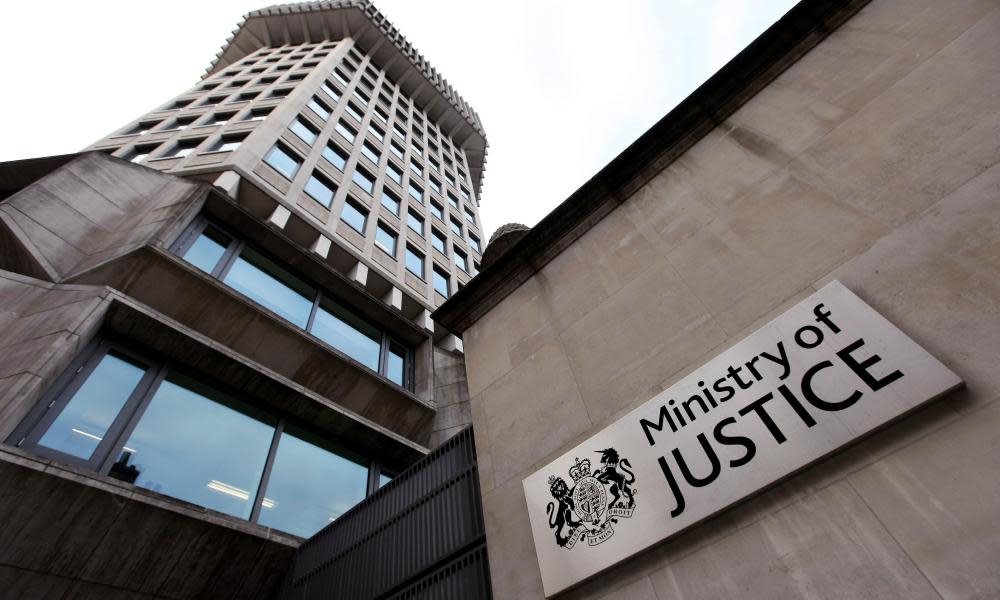UK courts service spending sees tenfold rise since 2010

The courts service spent £50m last year on agency and contract staff, a more than tenfold rise since 2010 when it spent less than £4m, while courts have been closing at an unprecedented rate.
The annual cost of temporary staff has rocketed over a period when the Ministry of Justice has suffered the deepest cuts of any Whitehall department and closed more than 220 courts across England and Wales.
Part of the increase appears to be linked to a £1bn court modernisation programme aimed at transferring more court hearings online or operating them through remote video-links. More than £30m is being spent on external management consultants including PwC.
The figures obtained by the shadow justice secretary, Richard Burgon, show that in the financial year 2010-11 when the coalition government came to power, the HM Courts and Tribunal Service (HMCTS) spent £3.7m on agency and contract staff. That figure has risen consistently and in 2016-17 stood at £50.6m.
The scale of the expansion in external expenditure has been revealed through written parliamentary questions as the government faces criticism over outsourcing services after the collapse of Carillion.
Burgon said: “Given that the MoJ is facing the deepest budget cuts of any government department, spending tens of millions of pounds more on agency staff is a false economy and a reckless use of resources.
“A huge amount of staffing expertise and experience has been lost by axing thousands of courts staff and this simply cannot be replaced by becoming increasingly reliant on agency staff. As the Carillion case shows, it is time that the MoJ ended its reliance on outsourcing, privatisation and the use of agency work.”
The numbers of HMCTS agency and contract staff in the period between 2011 and 2017 increased from 270 to 2,005. In a written answer, the MoJ said the expansion was due to the reform programme and a strategy to “maintain appropriate levels of workforce flexibility”. It anticipated that the numbers would decline.
Last week the MoJ revealed that a further eight courts had been earmarked for sale. These are Wandsworth county court and Blackfriars crown court in London, and magistrates courts in Cambridge, Northallerton, Banbury, Maidenhead, Chorley and Fleetwood.
The new justice minister Lucy Frazer said: “As we increase the use of digital services, it makes sense to consider the wider role and need for court buildings and assess whether some are still necessary to provide effective access to justice. Every penny raised will be put back into funding changes which will make justice easier to access for all at the same time as offering protections for the most vulnerable.”
The announcement provoked dismay among legal professionals. John Bache, the chairman of the Magistrates Association, said: “Justice should, wherever possible, be administered locally and a significant programme of court closures in recent years has meant that many courts are already quite remote from the communities that they serve. Further court closures risk exacerbating this situation.
“Video technology has a role to play but it is important that courts remain genuinely accessible to victims, witnesses and defendants who may want to attend in person, as well as to magistrates themselves, who cannot be expected to travel unreasonable distances to court on a regular basis.”
Joe Egan, the president of the Law Society, which represents solicitors in England and Wales, said: “The government is spending a great deal of public money making the court estate fit for 21st-century justice, but the absence of a strategy is all too evident. Every time a court is closed, further pressure is placed on those courts, personnel and judiciary that remain.”
Andrew Walker QC, the chair of the Bar Council, which represents barristers in England and Wales, said: “In light of the scale and pace of change, there are real concerns about the cumulative impact. If we are to ensure that we maintain effective access to local courts, then these further proposals must not be assessed in isolation.”

 Yahoo News
Yahoo News 
